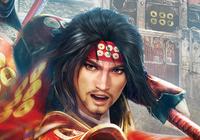Samurai Warriors: Spirit of Sanada (PlayStation 4) Review
By Renan Fontes  23.05.2017
23.05.2017

Whether it's Dynasty Warriors, Samurai Warriors, or Warriors Orochi, the Warriors franchise has always been about mowing down hundreds of enemies in massive battlefields with an ensemble cast. With Spirit of Sanada, Koei Tecmo takes a step back and plays around with a formula that has worked time and time again. Instead of giant maps, each battlefield has a series of fields that connect in and out of each other, and in place of the ensemble cast, the spin-off focuses on the Sanada family, specifically Masayuki Sanada and his son, Yukimura. It's a bold choice on Koei Tecmo's part, but it's one that pays off tremendously.
While the majority of the non-historical Warriors instalments have told their stories without having a large cast of playable characters, the ensemble has nonetheless been a staple of both Dynasty and Samurai Warriors, with each entry typically featuring multiple short story modes in favour of a longer one.
These shorter stories act as a way to flesh out the cast while presenting historical battles as close to unbiased as possible. Despite the ensemble cast and the multiple story modes, the series has not been shy about placing one character in the forefront: Yukimura Sanada.
From the very first instalment, Yukimura has acted as the series' mascot and is, by far, the most fleshed out character in the series. In that regard, it seems almost wasteful to centre an entire spin-off around his family's legacy, but Koei Tecmo's emphasis on making sure the story doesn't revolve entirely around Yukimura does wonders for Spirit of Sanada.
In fact, Yukimura isn't introduced as a playable character in the story until halfway through. Instead, the first half follows his father, Masayuki, attempting to keep the Sanada and Takeda clans alive.

Most characters will visibly age throughout the course of the story. with only a few retaining a static character model from start to finish. Watching, and playing as, Masayuki as he ages and becomes a father creates a natural attachment to the smaller cast.
Thanks to the intimate nature of the castle town hub, interactions with the cast feel very personal and there's a progression of growth with each chapter. While dialogue is almost exclusively condensed down to a few lines per NPC, there are several keywords that can be examined when talking to characters that fill in historical context and further flesh out the cast.
The story isn't the only aspect of Samurai Warriors Koei Tecmo has tweaked for the newest instalment. Battles in the Warriors franchise have typically taken place on one single field that's loaded all at once. This time, however, each map connects in and out of one another with every room featuring enemies, NPCs, or items to discover.

Along with this, battles are no longer fought and done with in one stage. Instead, some historical battles will take multiple stages to complete and will weave into different battlefields, allowing for a grander scope of warfare.
The branching stage layouts emphasize an explorability that simply isn't present in most Warriors titles. Checking every inch of a map and collecting all items in a stage offers experience bonuses at the end of the level, as well as useful equipment.
It would be easy to scale back the number of enemies per area with the inclusion of branching paths, but hordes of enemies are still plentiful and big battlefields retain their place in the franchise.
Chaining enemies in and out of combos feels incredibly satisfying, as each action is executed quickly and smoothly, keeping battles fresh and exciting. Enemies with larger health pools don't offer much challenge on the lower difficulties, but they can act a reasonable roadblock on hard mode, making sure battles don't boil down to mindlessly pressing Square.

While the story mode focuses primarily on Masayuki and Yukimura, there are side-missions that feature other characters and help explain background events. Each character has their own playstyle and weapon that adds flavour to the combat and these missions.
When all is said and done, the heart of Spirit of Sanada is the Sanada family and their growth. Masayuki and Yukimura are well developed protagonists who romanticize the Sengoku era without straying away from the harsh realities of war.
It's more than likely that Koei Tecmo's next Samurai Warriors endeavour will be the fifth main instalment, but Spirit of Sanada proves that focusing on one family's survival in the Sengoku Era makes for an incredibly fulfilling story that doesn't compromise the core gameplay of the series. This is a format that deserves to be revisited.

Cubed3 Rating
Exceptional - Gold Award

Ditching the series' ensemble cast in favour of a more personal family drama is one of the best decisions Koei Tecmo has made, and the key feature that elevates Spirit of Sanada to more than just a new entry in the Warriors franchise. The roster is still massive and everyone is playable during free mode, but the story locks down characters by the mission, personalizing the Sanada family over the course of roughly fifty years of Sengoku period history. Multi-stage battles emphasize just how war-torn the Sengoku era was, while offering a breath a fresh air to the traditional series stage format. The combat is as refined as ever and the focus on Masayuki and Yukimura makes for an incredibly intimate story. Spirit of Sanada is, plain and simple, one of best precedents Koei Tecmo has set.

![]() 9/10
9/10
![]() 0
(0 Votes)
0
(0 Votes)
 Out now
Out now  Out now
Out now  Out now
Out now  Out now
Out now Comments
Comments are currently disabled

 Sign In
Sign In Game Details
Game Details Subscribe to this topic
Subscribe to this topic Features
Features





 Top
Top

